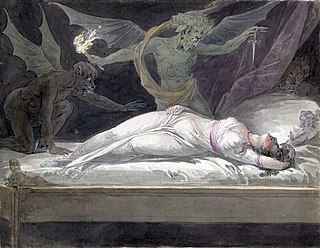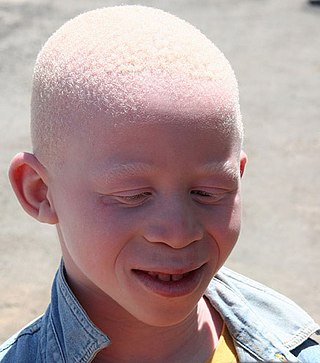
Choctaw mythology is part of the culture of the Choctaw, a Native American tribe originally occupying a large territory in the present-day Southeastern United States: much of the states of Mississippi, Alabama, and Louisiana. In the 19th century, the Choctaw were known to European Americans as one of the "Five Civilized Tribes" even though controversy surrounds their removal.

Cherokee spiritual beliefs are held in common among the Cherokee people – Native American peoples who are Indigenous to the Southeastern Woodlands, and today live primarily in communities in North Carolina, and Oklahoma. Some of the beliefs, and the stories and songs in which they have been preserved, exist in slightly different forms in the different communities in which they have been preserved. But for the most part, they still form a unified system of theology.
Seneca mythology refers to the mythology of the Onödowáʼga:, one of the six nations of the Haudenosaunee from the northeastern United States and Canada.

An incubus is a male demon in human form in folklore that seeks to have sexual intercourse with sleeping women; the corresponding spirit in female form is called a succubus. Parallels exist in many cultures.
Scaphism, also known as the boats, is reported by Plutarch in his Life of Artaxerxes as an ancient Persian method of execution. He describes the victim being trapped between two small boats, one inverted on top of the other, with limbs and head sticking out, feeding them and smearing them with milk and honey, and allowing them to fester and be devoured by insects and other vermin over time. Plutarch's report originates from a source considered dubious.
Blood Law, in some traditional Native American communities, is the severe, usually capital punishment of certain serious crimes. The responsibility for delivering this justice has traditionally fallen to the family or clan of the victim, usually a male relative.

Brazilian mythology is the subset of Brazilian folklore, with cultural elements of diverse origin found in Brazil, comprising folk tales, traditions, characters and beliefs regarding places, people, and entities. The category was originally restricted to indigenous elements, but has been extended to include:
Spearfinger, or U'tlun'ta', is a monster and witch in Cherokee legend, said to live along the eastern side of Tennessee and western part of North Carolina. U'tlun'ta is Cherokee for "the one with the pointed spear”. Her right forefinger resembles a spear or obsidian knife, which she uses to cut her victims. Her mouth is stained with blood from the livers she has eaten. She is also known as Nûñ'yunu'ï, which means "Stone-dress", for her stone-like skin. Often she clutches her right hand tightly, because she is hiding her heart and her only weak spot, which is her right palm.
The Nun'Yunu'Wi is a being of Cherokee mythology. Nun'Yunu'Wi is described as a human-like being with a skin as hard as stone, which no weapon can pierce. It carries a magical cane which points out victims and has other magical powers. It is described as a powerful sorcerer or medicine man. It devours human beings, interacts with spirits, and can control people's minds.

Legends of vampires have existed for millennia; cultures such as the Mesopotamians, Hebrews, ancient Greeks, and Romans had tales of demonic entities and blood-drinking spirits which are considered precursors to modern vampires. Despite the occurrence of vampire-like creatures in these ancient civilizations, the folklore for the entity known today as the vampire originates almost exclusively from early 18th-century Central Europe, particularly Transylvania as verbal traditions of many ethnic groups of the region were recorded and published. In most cases, vampires are revenants of evil beings, suicide victims, or witches, but can also be created by a malevolent spirit possessing a corpse or a living person being bitten by a vampire themselves. Belief in such legends became so rife that in some areas it caused mass hysteria and even public executions of people believed to be vampires.

The Whitby Witches is the first book in The Whitby Witches series by Robin Jarvis. It was originally published in 1991.

Persecution of people with albinism is based on the belief that certain body parts of albinistic people hold supernatural powers. Such beliefs are present in some parts of the African Great Lakes region, and have been exploited by witchdoctors who use such body parts as ingredients in religious rituals which are claimed to bring prosperity.

Hunted is the fifth novel of the House of Night fantasy series written by P.C. Cast and Kristin Cast. The book was published on March 10, 2009, by St. Martin's Press, an extension of Macmillan Publishers. By February 2010, according to Publishers Weekly it had already sold 950.000 copies. Since, it was translated in more than 20 languages.

West African mythology is the body of myths of the people of West Africa. It consists of tales of various deities, beings, legendary creatures, heroes and folktales from various ethnic groups. Some of these myths traveled across the Atlantic during the period of the Trans-Atlantic slave trade to become part of Caribbean, African-American and Brazilian mythology.

Shamanism among Alaska Natives was particularly important as it served to construct their special connection to their land, and a kinship with the animals with whom they share that land. Before the introduction of western culture and the religions that are now practiced in Alaska, there was a common spiritual connection made with the people to the land they occupied. The most common name for this connection is shamanism. Shamanism differs in every culture where it is practiced, in Alaska it is centered in the animals that are common in the area. Through the use of many myths, stories, and ceremonies these animals are personified and their spirits made tangible and in turn are deeply woven within the Native Alaska people today. It was through the shaman that the spirit world was connected to the natural world. A shaman in Alaska Native culture was a mediator, healer and the spirit worlds’ mouthpiece. Although shamanism is no longer popularly practiced, it was and continues to be the heart of the Native Alaskan people.
Daayan, Ḍāin or Ḍāini is often mistakenly regarded as a rendering for a witch in Indian folklore, the term has been derived from the Sanskrit word dakini, which refers to a female paranormal entity from patala. Dakinis have been described in medieval Hindu texts such as the Bhagavata Purana, Brahma Purana, Markandeya Purana and Kathasaritsagara as female fiendish spirits in the train of Kali who feed on human flesh.

Traité sur les apparitions des esprits et sur les vampires ou les revenans de Hongrie, de Moravie, &c. is one of the many works by an Abbot monk named Antoine Augustin Calmet, an exegete and an 18th-century Lorraine scholar of the Benedictine Order; also known as Dom Calmet. The work was published in 2 volumes that dealt with the extensive investigation into occult matters regarding the apparitions of angels, demons and other spirits.

Cherokee funeral rites comprise a broad set of ceremonies and traditions centred around the burial of a deceased person which were, and partially continue to be, practiced by the Cherokee peoples.
The views of witchcraft in North America have evolved through an interlinking history of cultural beliefs and interactions. These forces contribute to complex and evolving views of witchcraft. Today, North America hosts a diverse array of beliefs about witchcraft.










